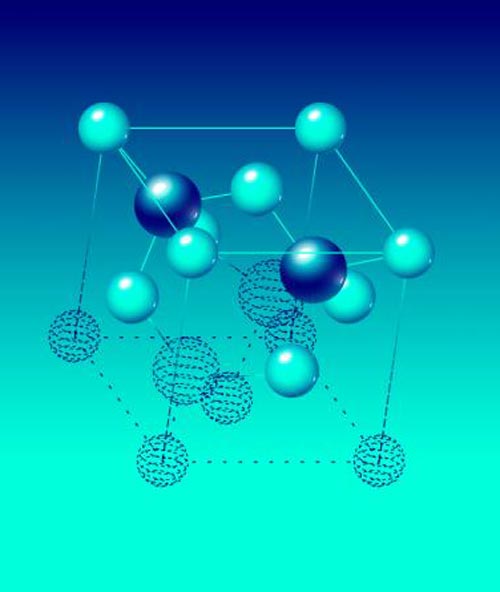Chemists teach computer program to model forces between atoms accurately

This is a slider. Credit: MIPT Press Office
Computer chemistry
Rapid advances in science over the last 100 years have resulted in the discovery of an astonishing number of organic and inorganic compounds, protein and lipid structures, and chemical reactions.
But with all these new structures and molecules, an increasing amount of time is necessary to study their makeup, biochemical and physical properties, as well as test the models of their behavior under various conditions and their possible interactions with other compounds. Such research can now be accelerated using computer modeling.
The force field approach is the currently dominant modeling technique. It makes use of a set of parameters describing a given biochemical system. These include bond lengths and angles, and charges, among others.
However, this technique is unable to accurately reproduce the quantum mechanical forces at play in molecules. Accurate quantum mechanical calculations are time-consuming. Besides, they only enable predictions of the behavior of samples that are at best several hundred atoms large.
Machine learning approaches to molecular modeling are of great interest to chemists. They enable models that are trained on relatively small data sets obtained by means of quantum mechanical calculations. Such models can then replace quantum mechanical calculations, because they are just as accurate and require about 1,000 times less computing power.
Progress made by machine learning tools modeling interactions between atoms
The researchers used machine learning to model the interactions between atoms in crystalline and liquid aluminum and uranium. Aluminum is a well-studied metal whose physical and chemical properties are known to scientists. Uranium, by contrast, was chosen because there are conflicting published data on its physical and chemical properties, which the researchers sought to define more accurately.
The paper details their study of such material properties as the phonon density of states, entropy, and the melting temperature of aluminum.
“The magnitudes of interatomic forces in crystals can be used to predict how atoms of the same element will behave under different temperatures and in a different phase,” says Ivan Kruglov from the Computational Materials Design Laboratory at MIPT.
“By the same token, you can use the data on the properties of a liquid to find out how the atoms will behave in a crystal. This means that by finding out more about the crystal structure of uranium, we can eventually reconstruct the entire phase diagram for this metal. Phase diagrams are charts indicating the properties of elements as a function of pressure and temperature. They are used to determine the limits to the applicability of a given element.”
To make sure that the data yielded by computer simulations is valid, they are compared to experimental results. The method used by the researchers was in good agreement with prior experiments. The information obtained with the approach based on machine learning had a lower error rate, compared to the modeling techniques using force fields.
In this study, the authors improve on their 2016 results in terms of the speed and accuracy of atomic system modeling using machine learning.
###
The study reported in this story was supported by the Russian Science Foundation.
Media Contact
All latest news from the category: Life Sciences and Chemistry
Articles and reports from the Life Sciences and chemistry area deal with applied and basic research into modern biology, chemistry and human medicine.
Valuable information can be found on a range of life sciences fields including bacteriology, biochemistry, bionics, bioinformatics, biophysics, biotechnology, genetics, geobotany, human biology, marine biology, microbiology, molecular biology, cellular biology, zoology, bioinorganic chemistry, microchemistry and environmental chemistry.
Newest articles

First-of-its-kind study uses remote sensing to monitor plastic debris in rivers and lakes
Remote sensing creates a cost-effective solution to monitoring plastic pollution. A first-of-its-kind study from researchers at the University of Minnesota Twin Cities shows how remote sensing can help monitor and…

Laser-based artificial neuron mimics nerve cell functions at lightning speed
With a processing speed a billion times faster than nature, chip-based laser neuron could help advance AI tasks such as pattern recognition and sequence prediction. Researchers have developed a laser-based…

Optimising the processing of plastic waste
Just one look in the yellow bin reveals a colourful jumble of different types of plastic. However, the purer and more uniform plastic waste is, the easier it is to…



